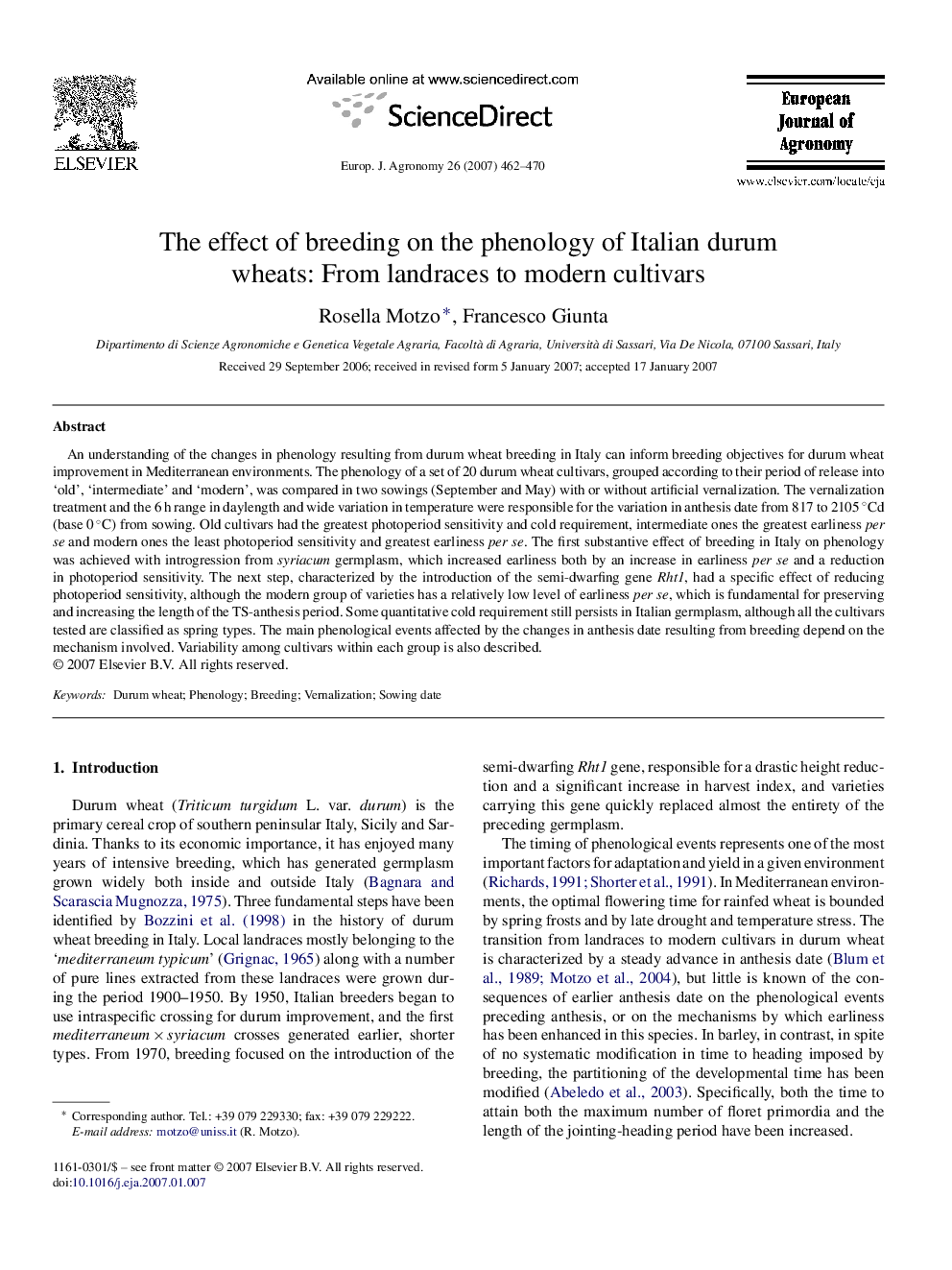| Article ID | Journal | Published Year | Pages | File Type |
|---|---|---|---|---|
| 4509618 | European Journal of Agronomy | 2007 | 9 Pages |
Abstract
An understanding of the changes in phenology resulting from durum wheat breeding in Italy can inform breeding objectives for durum wheat improvement in Mediterranean environments. The phenology of a set of 20 durum wheat cultivars, grouped according to their period of release into 'old', 'intermediate' and 'modern', was compared in two sowings (September and May) with or without artificial vernalization. The vernalization treatment and the 6 h range in daylength and wide variation in temperature were responsible for the variation in anthesis date from 817 to 2105 °Cd (base 0 °C) from sowing. Old cultivars had the greatest photoperiod sensitivity and cold requirement, intermediate ones the greatest earliness per se and modern ones the least photoperiod sensitivity and greatest earliness per se. The first substantive effect of breeding in Italy on phenology was achieved with introgression from syriacum germplasm, which increased earliness both by an increase in earliness per se and a reduction in photoperiod sensitivity. The next step, characterized by the introduction of the semi-dwarfing gene Rht1, had a specific effect of reducing photoperiod sensitivity, although the modern group of varieties has a relatively low level of earliness per se, which is fundamental for preserving and increasing the length of the TS-anthesis period. Some quantitative cold requirement still persists in Italian germplasm, although all the cultivars tested are classified as spring types. The main phenological events affected by the changes in anthesis date resulting from breeding depend on the mechanism involved. Variability among cultivars within each group is also described.
Related Topics
Life Sciences
Agricultural and Biological Sciences
Agronomy and Crop Science
Authors
Rosella Motzo, Francesco Giunta,
